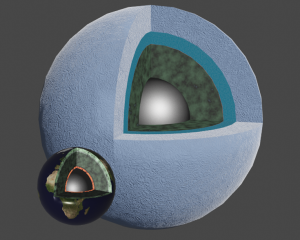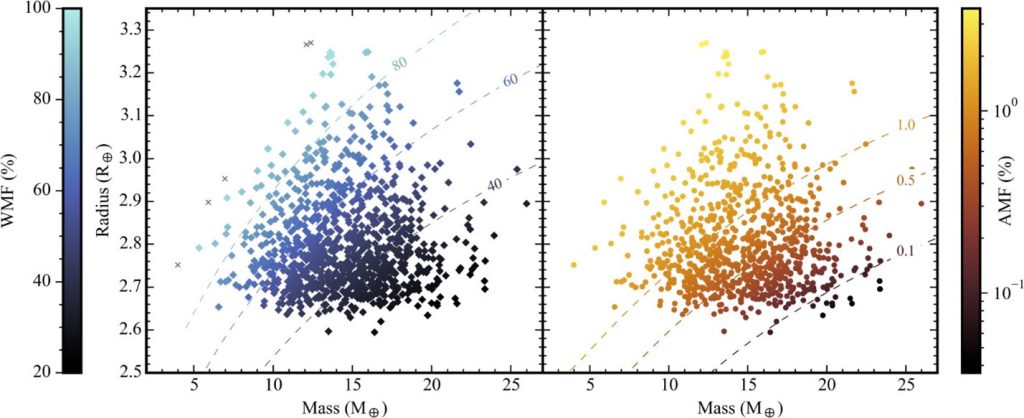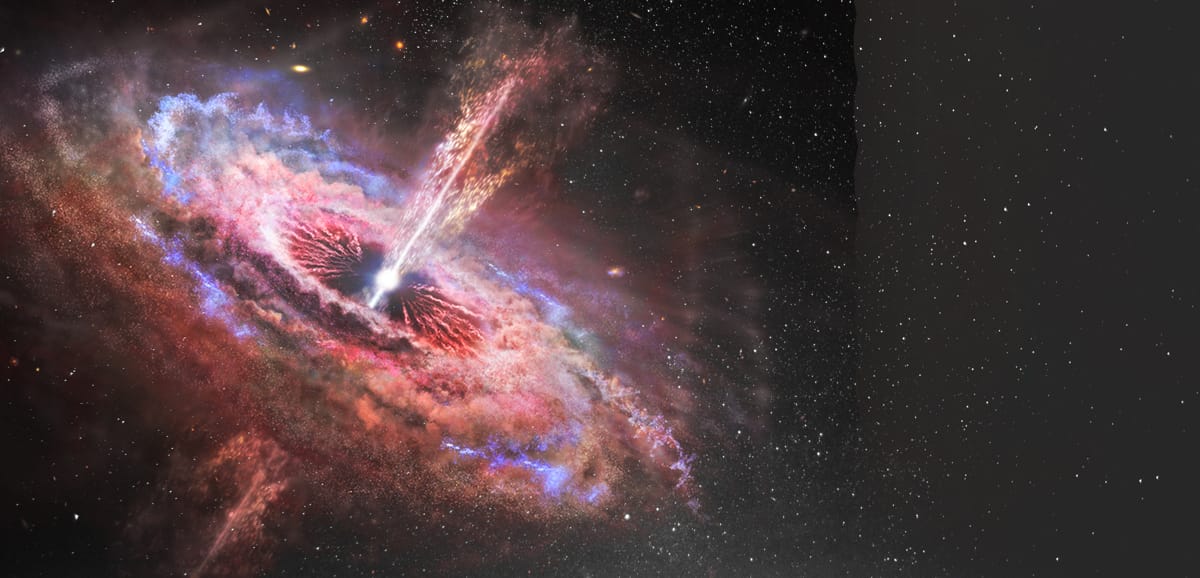Desai, Anmol; Turtelboom, Emma V.; Harada, Caleb K.; Dressing, Courtney D.; Rice, David R.; et al.
https://ui.adsabs.harvard.edu/abs/2024AJ….167..194D/abstract
https://iopscience.iop.org/article/10.3847/1538-3881/ad29ee
We present and confirm TOI-1751 b, a transiting sub-Neptune orbiting a slightly evolved, solar-type, metal-poor star (T eff = 5996 ± 110 K, log(g)=4.2±0.1 , V = 9.3 mag, [Fe/H] = ‑0.40 ± 0.06 dex) every 37.47 days. We use TESS photometry to measure a planet radius of 2.77+0.15−0.07 R⊕ . We also use both Keck/HIRES and APF/Levy radial velocities (RV) to derive a planet mass of 14.5+3.15−3.14M⊕ , and thus a planet density of 3.6 ± 0.9 g cm‑3. There is also a long-period (∼400 days) signal that is observed in only the Keck/HIRES data. We conclude that this long-period signal is not planetary in nature and is likely due to the window function of the Keck/HIRES observations. This highlights the role of complementary observations from multiple observatories to identify and exclude aliases in RV data. Finally, we investigate the potential compositions of this planet with the MAGRATHEA planet interior model, including rocky and water-rich solutions, as well as theoretical irradiated ocean models. TOI-1751 b is a warm sub-Neptune with an equilibrium temperature of ∼820 K. As TOI-1751 is a metal-poor star, TOI-1751 b may have formed in a water-enriched formation environment. We thus favor a volatile-rich interior composition for this planet.

A comparison of TOI-1751’s size to Earth with one possible interior structure represented by a 3D model. This interior has a large atmosphere of H/He and a supercritical water layer on top of a rocky mantle and iron core compared to the Earth which only has rock and iron.

Mass vs. radius posterior samples from the joint transit and RV fit for TOI-1751 b modeled with MAGRATHEA. Left: Models of TOI-1751 b assuming an Earth-like rock/iron ratio, no atmosphere (i.e., AMF = 0%), a supercritical and condensed water layer, and a water envelope. By allowing the planet’s envelope to be made of water, the WMF required to reproduce the planet’s radius is substantially reduced. Grey x’s mark mass and radius samples which are too low density to be modeled with AMF=0%. Right: Models of TOI-1751 b assuming an Earth-like mantle/core ratio, a WMF of 20%, and a non-ideal H/He atmosphere. The non-ideal atmosphere is less compressible than an ideal H/He envelope, and thus a smaller AMF is needed to reproduce the measured planet radius. Iso-composition curves for WMF and AMF are shown with dashed lines.





